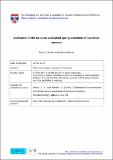Files in this item
Calibration of the torsional and lateral spring constants of cantilever sensors
Item metadata
| dc.contributor.author | Parkin, John David | |
| dc.contributor.author | Hähner, Georg | |
| dc.date.accessioned | 2015-06-05T23:10:55Z | |
| dc.date.available | 2015-06-05T23:10:55Z | |
| dc.date.issued | 2014-06-06 | |
| dc.identifier | 122486215 | |
| dc.identifier | ba69d5bb-d88b-47f7-88d1-ece07370c1ec | |
| dc.identifier | 84900422402 | |
| dc.identifier | 000336728400014 | |
| dc.identifier.citation | Parkin , J D & Hähner , G 2014 , ' Calibration of the torsional and lateral spring constants of cantilever sensors ' , Nanotechnology , vol. 25 , no. 22 , 225701 . https://doi.org/10.1088/0957-4484/25/22/225701 | en |
| dc.identifier.issn | 0957-4484 | |
| dc.identifier.other | ORCID: /0000-0002-6765-344X/work/60426709 | |
| dc.identifier.uri | https://hdl.handle.net/10023/6771 | |
| dc.description | Financial support from the EPSRC (EP/K000411/1) and the University of St. Andrews under an Impact Acceleration Account (EP/K503940/1) are gratefully acknowledged. | en |
| dc.description.abstract | A method suitable for the calibration of the spring constants of all torsional and lateral eigenmodes of micro- and nanocantilever sensors is described. Such sensors enable nanomechanical measurements and the characterization of nanomaterials, for example with atomic force microscopy. The method presented involves the interaction of a flow of fluid from a microchannel with the cantilever beam. Forces imparted by the flow cause the cantilever to bend and induce a measurable change of the torsional and lateral resonance frequencies. From the frequency shifts the cantilever spring constants can be determined. The method does not involve physical contact between the cantilever or its tip and a hard surface. As such it is non-invasive and does not risk damage to the cantilever. Experimental data is presented for two rectangular microcantilevers with fundamental flexural spring constants of 0.046 and 0.154 N/m. The experimentally determined torsional stiffness values are compared with those obtained by the Sader method. We demonstrate that the torsional spring constants can be readily calibrated using the method with an accuracy of around 15%. | |
| dc.format.extent | 9 | |
| dc.format.extent | 412970 | |
| dc.language.iso | eng | |
| dc.relation.ispartof | Nanotechnology | en |
| dc.subject | Cantilever sensors | en |
| dc.subject | Higher torsional and lateral modes | en |
| dc.subject | Torsional and lateral spring constants | en |
| dc.subject | Microchannel | en |
| dc.subject | Fluid flow | en |
| dc.subject | Fluidic forces | en |
| dc.subject | QD Chemistry | en |
| dc.subject | BDC | en |
| dc.subject.lcc | QD | en |
| dc.title | Calibration of the torsional and lateral spring constants of cantilever sensors | en |
| dc.type | Journal article | en |
| dc.contributor.sponsor | EPSRC | en |
| dc.contributor.sponsor | EPSRC | en |
| dc.contributor.institution | University of St Andrews. School of Chemistry | en |
| dc.contributor.institution | University of St Andrews. EaSTCHEM | en |
| dc.identifier.doi | 10.1088/0957-4484/25/22/225701 | |
| dc.description.status | Peer reviewed | en |
| dc.date.embargoedUntil | 2015-06-06 | |
| dc.identifier.grantnumber | ep/k000411/1 | en |
| dc.identifier.grantnumber | EP/K503940/1 | en |
This item appears in the following Collection(s)
Items in the St Andrews Research Repository are protected by copyright, with all rights reserved, unless otherwise indicated.

